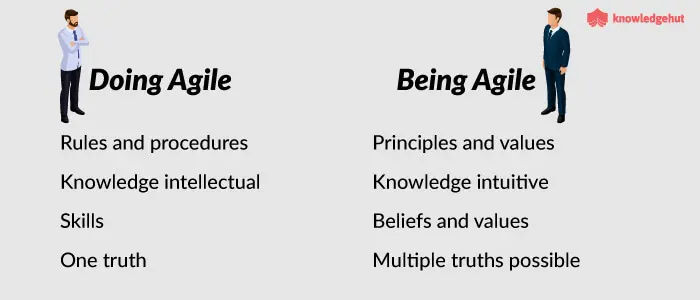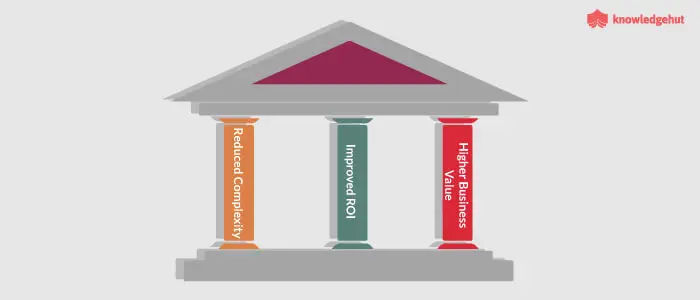- Blog Categories
- Project Management
- Agile Management
- IT Service Management
- Cloud Computing
- Business Management
- Business Intelligence
- Quality Engineer
- Cyber Security
- Career
- Big Data
- Programming
- Most Popular Blogs
- PMP Exam Schedule for 2024: Check PMP Exam Date
- Top 60+ PMP Exam Questions and Answers for 2024
- PMP Cheat Sheet and PMP Formulas To Use in 2024
- What is PMP Process? A Complete List of 49 Processes of PMP
- Top 15+ Project Management Case Studies with Examples 2024
- Top Picks by Authors
- Top 170 Project Management Research Topics
- What is Effective Communication: Definition
- How to Create a Project Plan in Excel in 2024?
- PMP Certification Exam Eligibility in 2024 [A Complete Checklist]
- PMP Certification Fees - All Aspects of PMP Certification Fee
- Most Popular Blogs
- CSM vs PSM: Which Certification to Choose in 2024?
- How Much Does Scrum Master Certification Cost in 2024?
- CSPO vs PSPO Certification: What to Choose in 2024?
- 8 Best Scrum Master Certifications to Pursue in 2024
- Safe Agilist Exam: A Complete Study Guide 2024
- Top Picks by Authors
- SAFe vs Agile: Difference Between Scaled Agile and Agile
- Top 21 Scrum Best Practices for Efficient Agile Workflow
- 30 User Story Examples and Templates to Use in 2024
- State of Agile: Things You Need to Know
- Top 24 Career Benefits of a Certifed Scrum Master
- Most Popular Blogs
- ITIL Certification Cost in 2024 [Exam Fee & Other Expenses]
- Top 17 Required Skills for System Administrator in 2024
- How Effective Is Itil Certification for a Job Switch?
- IT Service Management (ITSM) Role and Responsibilities
- Top 25 Service Based Companies in India in 2024
- Top Picks by Authors
- What is Escalation Matrix & How Does It Work? [Types, Process]
- ITIL Service Operation: Phases, Functions, Best Practices
- 10 Best Facility Management Software in 2024
- What is Service Request Management in ITIL? Example, Steps, Tips
- An Introduction To ITIL® Exam
- Most Popular Blogs
- A Complete AWS Cheat Sheet: Important Topics Covered
- Top AWS Solution Architect Projects in 2024
- 15 Best Azure Certifications 2024: Which one to Choose?
- Top 22 Cloud Computing Project Ideas in 2024 [Source Code]
- How to Become an Azure Data Engineer? 2024 Roadmap
- Top Picks by Authors
- Top 40 IoT Project Ideas and Topics in 2024 [Source Code]
- The Future of AWS: Top Trends & Predictions in 2024
- AWS Solutions Architect vs AWS Developer [Key Differences]
- Top 20 Azure Data Engineering Projects in 2024 [Source Code]
- 25 Best Cloud Computing Tools in 2024
- Most Popular Blogs
- Company Analysis Report: Examples, Templates, Components
- 400 Trending Business Management Research Topics
- Business Analysis Body of Knowledge (BABOK): Guide
- ECBA Certification: Is it Worth it?
- How to Become Business Analyst in 2024? Step-by-Step
- Top Picks by Authors
- Top 20 Business Analytics Project in 2024 [With Source Code]
- ECBA Certification Cost Across Countries
- Top 9 Free Business Requirements Document (BRD) Templates
- Business Analyst Job Description in 2024 [Key Responsibility]
- Business Analysis Framework: Elements, Process, Techniques
- Most Popular Blogs
- Best Career options after BA [2024]
- Top Career Options after BCom to Know in 2024
- Top 10 Power Bi Books of 2024 [Beginners to Experienced]
- Power BI Skills in Demand: How to Stand Out in the Job Market
- Top 15 Power BI Project Ideas
- Top Picks by Authors
- 10 Limitations of Power BI: You Must Know in 2024
- Top 45 Career Options After BBA in 2024 [With Salary]
- Top Power BI Dashboard Templates of 2024
- What is Power BI Used For - Practical Applications Of Power BI
- SSRS Vs Power BI - What are the Key Differences?
- Most Popular Blogs
- Data Collection Plan For Six Sigma: How to Create One?
- Quality Engineer Resume for 2024 [Examples + Tips]
- 20 Best Quality Management Certifications That Pay Well in 2024
- Six Sigma in Operations Management [A Brief Introduction]
- Top Picks by Authors
- Six Sigma Green Belt vs PMP: What's the Difference
- Quality Management: Definition, Importance, Components
- Adding Green Belt Certifications to Your Resume
- Six Sigma Green Belt in Healthcare: Concepts, Benefits and Examples
- Most Popular Blogs
- Latest CISSP Exam Dumps of 2024 [Free CISSP Dumps]
- CISSP vs Security+ Certifications: Which is Best in 2024?
- Best CISSP Study Guides for 2024 + CISSP Study Plan
- How to Become an Ethical Hacker in 2024?
- Top Picks by Authors
- CISSP vs Master's Degree: Which One to Choose in 2024?
- CISSP Endorsement Process: Requirements & Example
- OSCP vs CISSP | Top Cybersecurity Certifications
- How to Pass the CISSP Exam on Your 1st Attempt in 2024?
- Most Popular Blogs
- Best Career options after BA [2024]
- Top Picks by Authors
- Top Career Options & Courses After 12th Commerce in 2024
- Recommended Blogs
- 30 Best Answers for Your 'Reason for Job Change' in 2024
- Recommended Blogs
- Time Management Skills: How it Affects your Career
- Most Popular Blogs
- Top 28 Big Data Companies to Know in 2024
- Top Picks by Authors
- Top Big Data Tools You Need to Know in 2024
- Most Popular Blogs
- Web Development Using PHP And MySQL
- Top Picks by Authors
- Top 30 Software Engineering Projects in 2024 [Source Code]
- More
- Tutorials
- Practise Tests
- Interview Questions
- Free Courses
- Agile & PMP Practice Tests
- Agile Testing
- Agile Scrum Practice Exam
- CAPM Practice Test
- PRINCE2 Foundation Exam
- PMP Practice Exam
- Cloud Related Practice Test
- Azure Infrastructure Solutions
- AWS Solutions Architect
- AWS Developer Associate
- IT Related Pratice Test
- ITIL Practice Test
- Devops Practice Test
- TOGAF® Practice Test
- Other Practice Test
- Oracle Primavera P6 V8
- MS Project Practice Test
- Project Management & Agile
- Project Management Interview Questions
- Release Train Engineer Interview Questions
- Agile Coach Interview Questions
- Scrum Interview Questions
- IT Project Manager Interview Questions
- Cloud & Data
- Azure Databricks Interview Questions
- AWS architect Interview Questions
- Cloud Computing Interview Questions
- AWS Interview Questions
- Kubernetes Interview Questions
- Web Development
- CSS3 Free Course with Certificates
- Basics of Spring Core and MVC
- Javascript Free Course with Certificate
- React Free Course with Certificate
- Node JS Free Certification Course
- Data Science
- Python Machine Learning Course
- Python for Data Science Free Course
- NLP Free Course with Certificate
- Data Analysis Using SQL
Top 5 Agile Trends to Take You Safe Through 2025 and Beyond
By Lindy Quick
Updated on Feb 03, 2025 | 6 min read | 8.9k views
Share:
Table of Contents
In recent times, Agile has proved to be more than just a buzzword in the IT industry.
The amazing results of Agile project management have widened its scope for implementation in other than IT industry also; therefore, we often come across the terms like “being Agile” and “doing Agile”.

Insider Tips to Land Your Dream Scrum Master Job
Includes Scrum Resume Sample

More and more organizations and enterprises irrespective of size and business niche are adopting Agile with an eye on commitment, delivery values, profitability, customer’s satisfaction etc. Because of continuous Agile evolvement, you need to align Agile practices with the latest trends to compete with excellence in 2024 and beyond. Following are the top five Agile trends that will help you plan and sail safe through the competitive marketing environment.
1) Short-Term Activities Oriented Agile Training

Organizing the short-term activities oriented intensive workshop/training, planned to train the participants for implementation of specific skill in real projects, is a new emerging trend in Agile organizations. The long and exhaustive classroom training of 4 or 5 days are no longer a preference. The short–term Agile workshops/training leave the Agile team members with new ideas and cohesive understanding of the Agile roadmap. The improved capability to execute short iterations supports to market the product early. In addition, Agile workshops are helping the organizations to develop multi-disciplinary Agile specialists to maximize overall performance.
2) Rapid Feedback

Predictions are good to plan but the ever-changing working conditions, new demands, and altered quality standards etc deviate the results. The biggest trend in Agile management for 2024, I noticed recently, is to focus more on rapid feedback of developments rather than depending on the predicted outcome. This approach aligns with the principles of the Scaled Agile Framework certification, which emphasizes iterative and adaptive practices. Rapid feedback is vital for Agile teams to understand the way project development is going. Creating a friendly environment allowing every team member to comment and even seek the feedback saves considerable time besides giving a true picture of progress. Continuous Integration (CI) is the best tool to maximize the benefits of rapid feedback.
3. Embracing Agile Spirit

Over the years, a number of organizations twisted & curled Agile methodology to meet their interests and suitability; as a result, some of these tasted just the semi-success. The new trend shows that organizations are embracing the Agile spirit as a part of organizational culture. Organizations are conducting short-period objective oriented trainings to strengthen the Agile mindset of team members.
The application of modern Agile principles leads the organizations to deliver more values with satisfactory profit. There are four core characteristics of Agile mindset - value matters, small cycles matters, ecosystem in entire organization matters and culture matters. Agile Spirit embracement can be improved by following the five simple tactics- be transparent, be disciplined, ensure participation, get everyone aligned and set up collaboration as an Agile tool.
4) Cloud-Based Solutions

More Agile teams are adopting cloud-based solutions to find new ways for envision (prediction), coding, testing and deployment faster than they are/were doing now with the intention to have an edge over their competitors. Server-less computing has become the favorite of Agile teams; as, it reduces the need of ‘always on’ traditional server infrastructure, in addition to reducing the infrastructure and operational costing. The organizations that follow cloud-based Agile methodology have enormous competitive advantages supporting for higher quality, greater agility, faster market responsiveness, reducing costing, improving client’s experience etc. It can be said that Cloud technology is going to be an Agile accelerator.
5) More Focus on ‘Business Value’ of User Stories

“If you can’t measure the results, you can’t improve the process” fine fits to modern Agile culture. Today, Agile organizations are more focused on measuring the lagging indicators like ROI of new products/ features, Net Promoter Score (NPS) of team members & customers, cycle time and operational stability etc. Using three-dimensional metrics, encompassing complexity, ROI and business value, is the new approach to measure the business value of a user story. Identifying business values before writing a user story rather than writing a user story and then evaluating the business values is a significant shift in modern Agile practice.
Ready to achieve mastery in PRINCE2? Enroll in our online PRINCE2 foundation and practitioner certification today and take your skills in project management to new heights with ease!
Summary
Agile culture adoption is growing fast in organizations around the world. Internal Agile coaches, consistent Agile practices, and implementation of a common tool across Agile teams are the top three factors encouraging businesses to continue their Agile journey. According to ‘12th annual State of Agile report’, the top five Agile benefits reported by the organizations are –
- Better project visibility – through- rapid feedback
- Faster delivery – through – cloud-based solution
- Enhanced productivity – through – activities oriented learning workshops
- Improved ability to manage the changing priorities – through – deep focus on business value of a user story
- Better IT alignment – through – Agile spirit embracement
KnowledgeHut provides objective-oriented customized Agile training that helps the organizations match the steps with the latest trends in Agile methodology.
Get Free Consultation
By submitting, I accept the T&C and
Privacy Policy
Ready to lead with Scrum expertise?


